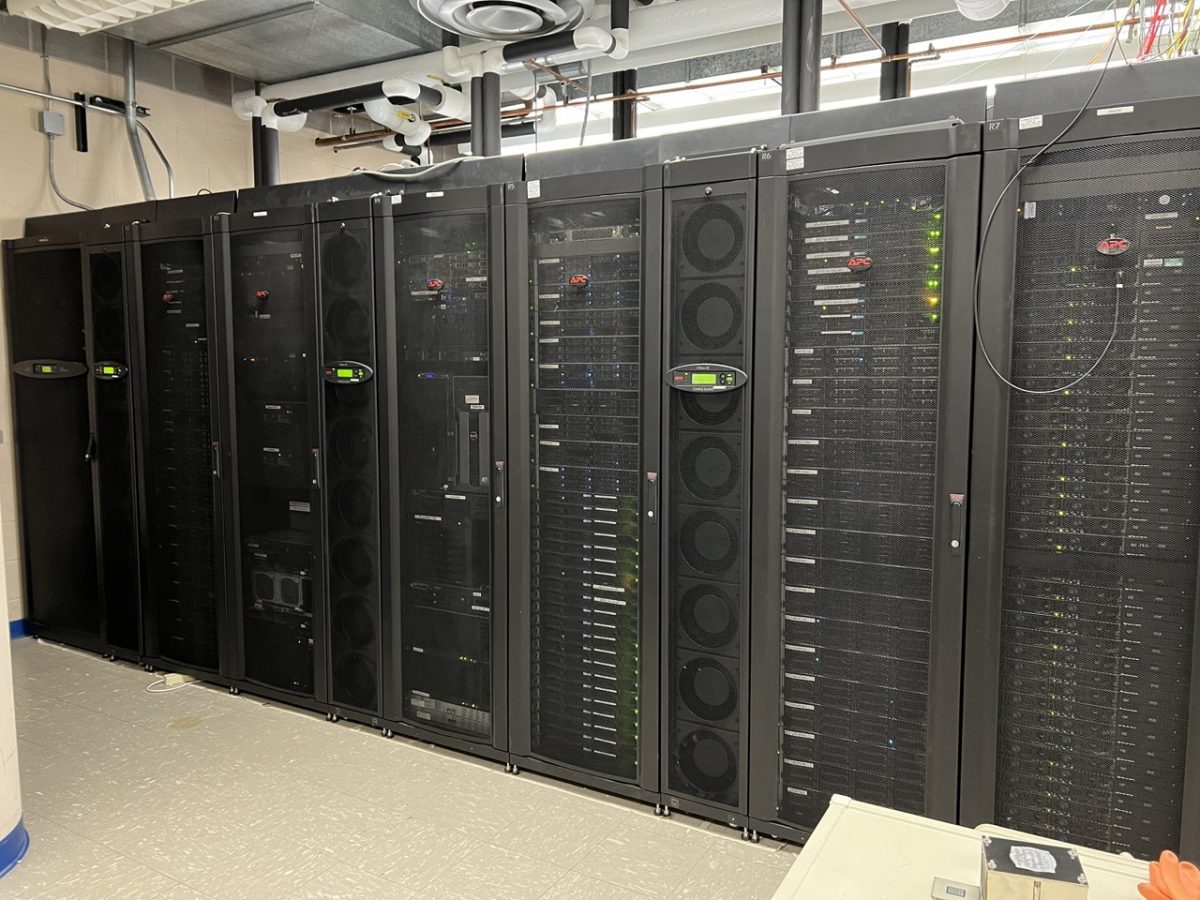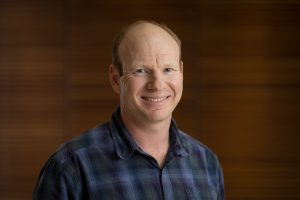Sixteen UW–Madison researchers — including emeritus professor of physics Clint Sprott — were recently recognized on the Institute for Scientific Information™ list of Highly Cited Researchers 2022. The list identifies scientists and social scientists who have demonstrated significant influence through publication of multiple highly-cited papers during the last decade.
Month: November 2022
Department of Energy grant to train students at the interface of high energy physics and computer science

To truly understand our physical world, scientists look to the very small, subatomic particles that make up everything. Particle physics generally falls under the discipline of high energy physics (HEP), where higher and higher energy collisions — tens of teraelectronvolts, or about ten trillion times the energy of visible light — lead to the detection and characterization of particles and how they interact.
These collisions also lead to the accumulation of inordinate amounts of data, and HEP is increasingly becoming a field where researchers must be experts in both particle physics and advanced computing technologies. HEP graduate students, however, rarely enter graduate school with backgrounds in both fields.
Physicists from UW–Madison, Princeton University, and the University of Massachusetts-Amherst are looking to address the science goals of the HEP experiments by training the next generation of software and computing experts with a 5-year, ~$4 million grant from the U.S. Department of Energy (DOE) Office of Science, known as Training to Advance Computational High Energy Physics in the Exascale Era, or TAC-HEP.
“The exascale era is upon us in HEP and the complexity, computational needs and data volumes of current and future HEP experiments will increase dramatically over the next few years. A paradigm shift in software and computing is needed to tackle the data onslaught,” says Tulika Bose, a physics professor at UW–Madison and TAC-HEP principal investigator. “TAC-HEP will help train a new generation of software and computing experts who can take on this challenge head-on and help maximize the physics reach of the experiments.”

In total, DOE announced $10 million in funding today for three projects providing classroom training and research opportunities in computational high energy physics to train the next generation of computational scientists and engineers needed to deliver scientific discoveries.
At UW–Madison, TAC-HEP will annually fund four-to-six two-year training positions for graduate students working on a computational HEP research project with Bose or physics professors Keith Bechtol, Kevin Black, Kyle Cranmer, Sridhara Dasu, or Brian Rebel. Their research must broadly fit into the categories of high-performance software and algorithms, collaborative software infrastructure, or hardware-software co-design.
Bose’s research group, for example, focuses on proton-proton collisions in the Compact Muon Solenoid (CMS) at the CERN Large Hadron Collider (LHC). The high luminosity run of the LHC, starting in 2029, will bring unprecedented physics opportunities — and computing challenges, challenges that TAC-HEP graduate students will tackle firsthand.
“The annual data volume will increase by 30 times while the event reconstruction time will increase by nearly 25 times, requiring modernization of the software and computing infrastructure to handle the demands of the experiments,” Bose says. “Novel algorithms using modern hardware and accelerators, such as Graphics Processing Units, or GPUs, will need to be exploited together with a transformation of the data analysis process.”
TAC-HEP will incorporate targeted coursework and specialized training modules that will enable the design and development of coherent hardware and software systems, collaborative software infrastructure, and high-performance software and algorithms. Structured R&D projects, undertaken in collaboration with DOE laboratories (Fermilab and Brookhaven National Lab) and integrated within the program, will provide students from all three participating universities with hands-on experience with cutting-edge computational tools, software and technology.
The training program will also include student professional development including oral and written science communication and cohort-building activities. These components are expected to help build a cohort of students with the goal of increasing recruitment and retention of a diverse group of graduate students.
“Future high energy physics discoveries will require large accurate simulations and efficient collaborative software,” said Regina Rameika, DOE Associate Director of Science for High Energy Physics. “These traineeships will educate the scientists and engineers necessary to design, develop, deploy, and maintain the software and computing infrastructure essential for the future of high energy physics.
UW–Madison physicists key in revealing neutrinos emanating from galactic neighbor with a gigantic black hole
On Earth, billions of subatomic particles called neutrinos pass through us every second, but we never notice because they rarely interact with matter. Because of this, neutrinos can travel straight paths over vast distances unimpeded, carrying information about their cosmic origins.
Although most of these aptly named “ghost” particles detected on Earth originate from the Sun or our own atmosphere, some neutrinos come from the cosmos, far beyond our galaxy. These neutrinos, called astrophysical neutrinos, can provide valuable insight into some of the most powerful objects in the universe.
For the first time, an international team of scientists has found evidence of high-energy astrophysical neutrinos emanating from the galaxy NGC 1068 in the constellation Cetus.
The detection was made by the National Science Foundation-supported IceCube Neutrino Observatory, a 1-billion-ton neutrino telescope made of scientific instruments and ice situated 1.5-2.5 kilometers below the surface at the South Pole.
These new results, to be published tomorrow (Nov. 4, 2022) in Science, were shared in a presentation given today at the Wisconsin Institute for Discovery.
“One neutrino can single out a source. But only an observation with multiple neutrinos will reveal the obscured core of the most energetic cosmic objects,” says Francis Halzen, a University of Wisconsin–Madison professor of physics and principal investigator of the IceCube project. “IceCube has accumulated some 80 neutrinos of teraelectronvolt energy from NGC 1068, which are not yet enough to answer all our questions, but they definitely are the next big step toward the realization of neutrino astronomy.”
For the full story, please visit https://news.wisc.edu/uw-madison-scientists-and-staff-key-in-revealing-neutrinos-emanating-from-galactic-neighbor-with-a-gigantic-black-hole/
Shimon Kolkowitz promoted to Associate Professor

Congratulations to Shimon Kolkowitz on his promotion to Associate Professor of Physics with tenure! Professor Kolkowitz is an AMO physicist whose research focuses on ultraprecise atomic clocks and nitrogen vacancy (NV) centers in diamonds, both of which have applications in quantum sensing. He joined the UW–Madison physics faculty as an assistant professor in January 2018. Since then, he has published numerous articles in top journals, including incredibly accurate comparisons of the rate that clocks run this year in the journal Nature.
Department Chair Mark Eriksson emphasizes Kolkowitz’s contributions across all aspects of his work: “Shimon, graduate students, and postdocs here at Wisconsin, have set records with their atomic clock, and at the same time, Shimon has played critically important roles in teaching and service, including guiding our graduate admissions through the pandemic and all that entails.”
Kolkowitz has been named a Packard Fellow, a Sloan Fellow, and has earned an NSF CAREER award, amongst other honors. He is also the Education, Workforce Development, and Outreach Major Activities Lead for Hybrid Quantum Architectures and Networks (HQAN), an NSF QLCI Institute of which UW–Madison is a member.